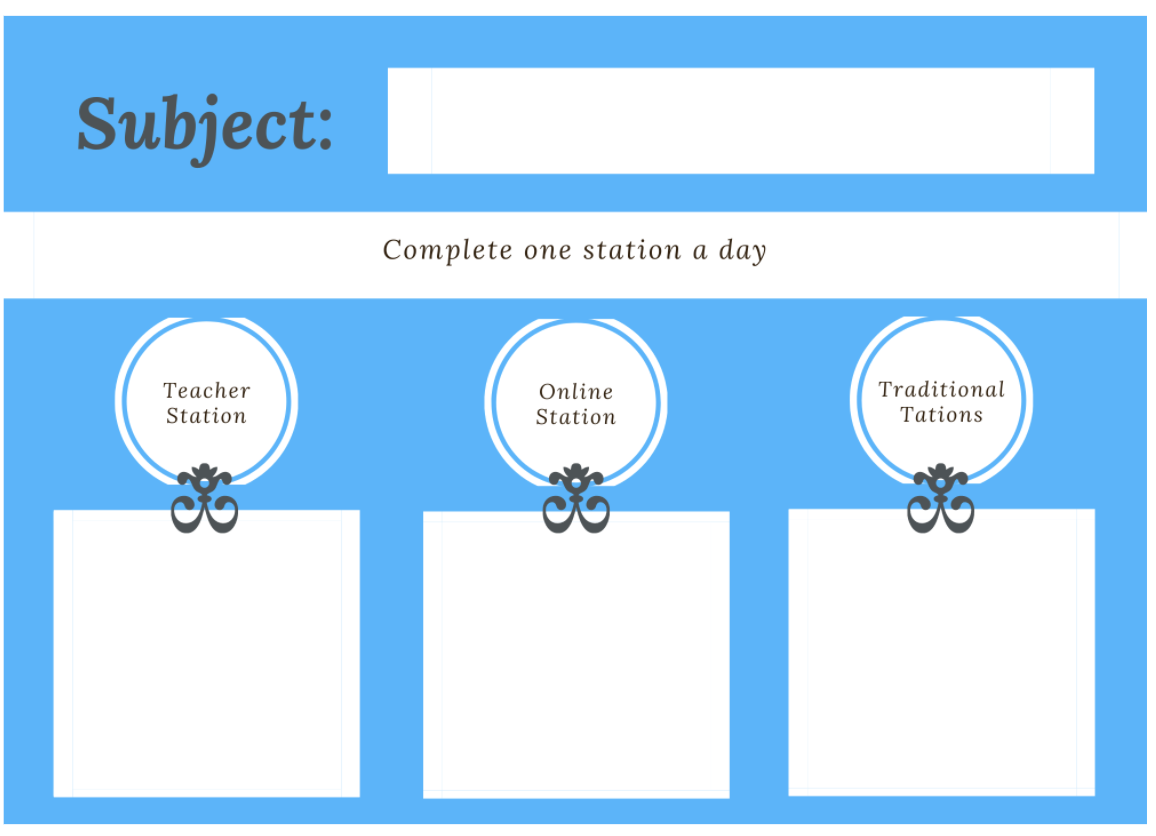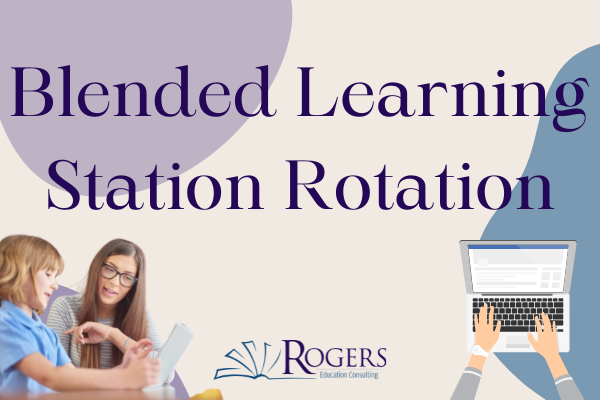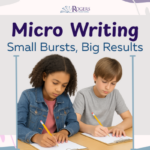Blended learning, not hybrid learning, is a delicate mix of MEANINGFUL online learning and traditional learning.
Benefits of Blended Learning
There are many benefits to learning this way, but the obvious current benefit is the COVID situation. Every place to already be prepared to instruct this way will have a smoother transition if, all of a sudden, they need to go virtual. However, blended learning also helps teachers create lessons that can reach all students, take into account differences in learning styles, and aid in differentiation implementation. In my experience, teaching this way has allowed me to know my students as learners better, kept them engaged in learning longer, and improved my collaboration with peers. As mentioned, there are plenty of reasons, but those are a few of my faves!
What is Station Rotation?
Station rotation is one method for blended learning implementation. In my coaching experience, I have noticed teachers get caught up in the definitions of the different types of blended learning frameworks, my advice is – don’t! My station rotations slowly turn into a hybrid of station rotation and playlists and sometimes I even add in an element of flipped learning. It’s okay!
The important thing to remember about station rotation is that you have a teacher station, an online station, and a traditional station (offline station). That’s it! Well … kind of. Of course, you can have more stations than that, and add extra online or traditional stations. There are no firm rules on that.
How I Plan for Station Rotation
- I personally start with my Learning Goal for the lesson or unit. So, if we are in a characterization unit, ALL lessons must help students learn how to analyze characters.
- Then I think of the lessons I would do in this unit. Which of those activities are traditional and which are online? What can I add to spice it up or make it better?
- Then I look at each section, both the online and traditional, and see what choices I can embed. Giving students choice allows for their unique learning differences to be accommodated. They just have to read the learning goal.
- Then I check myself! I make sure that the learning I put down is meaningful, interactive, engaging, etc. I don’t want students to do online worksheets, watch a movie, etc. and then move to traditional worksheets.
- Are the students actively involved in their online learning? Online stations should involve active, engaged learning, creating, collaboration, etc. It should not be solely watching EdPuzzles or reading online articles.
- Are these activities differentiated? If everyone is doing the exact same thing in the same way, is it necessary to even split them up into groups?
- Now, I think through my teacher table rotation. I group my students based on the learning objective. Hopefully, these groups are flexible and change as the learning target changes. I groups the students based on learning need. They don’t all have to have the same number of kids. I typically decide on what the direct instruction is – making sure it’s explicit and short! Then I work on the next stage of The Gradual Release of Responsibility – the “we do”. I have the students interact with the learning in some way with me nearby to offer guidance as necessary. I am also watching them intently. I am taking formative assessment notes in my head. I am noticing students’ thinking, self-corrections, and areas when they required guidance. This will help me plan for their future learning. I always wrap up the teacher table with feedback and next steps.
Templates/Examples
- Template 1: Has four stations (teacher table, independent practice, collaborative practice, and online practice).
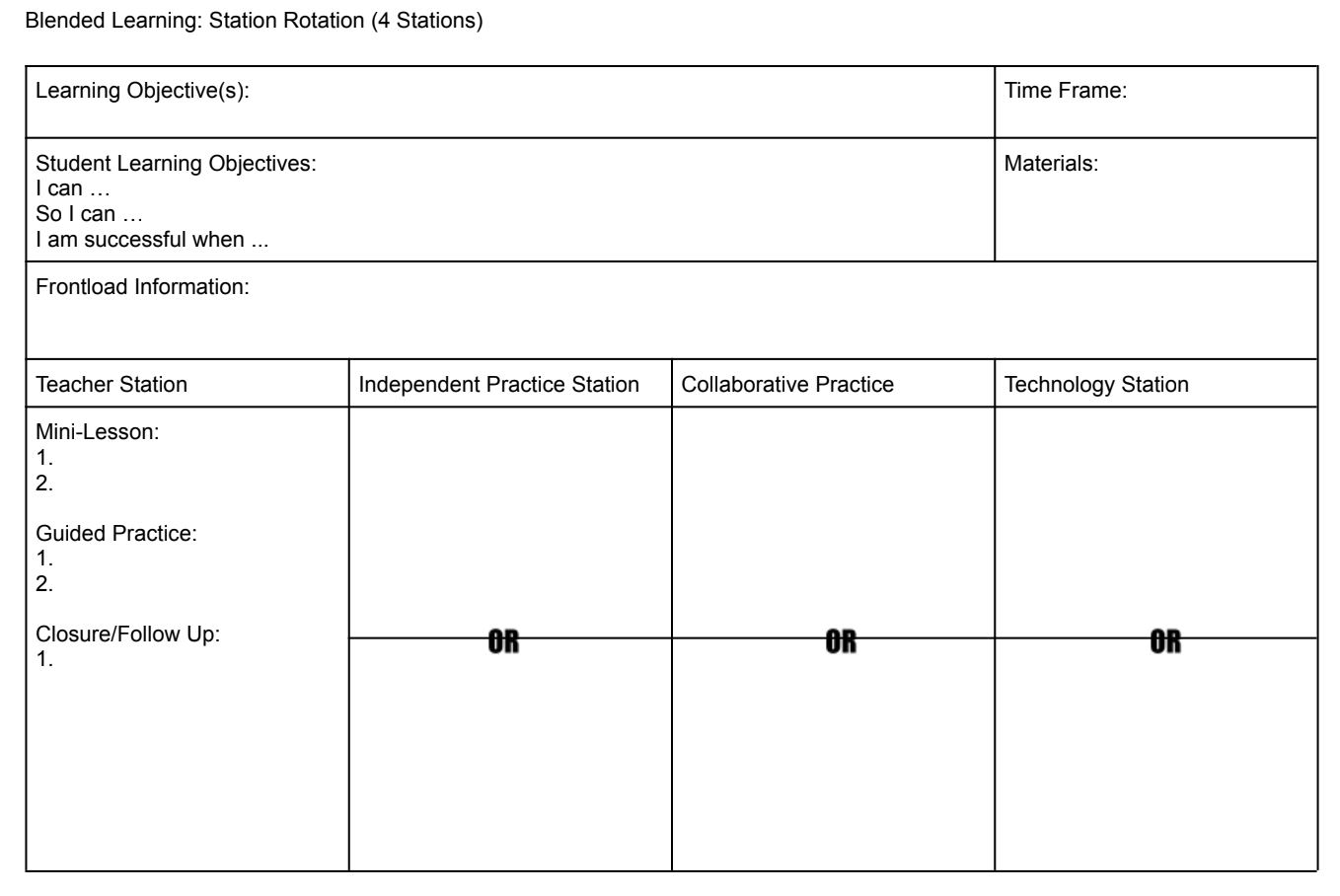
- Template 2: Choice Boards that mix traditional and online MEANINGFUL activities will allow teachers to pull groups.
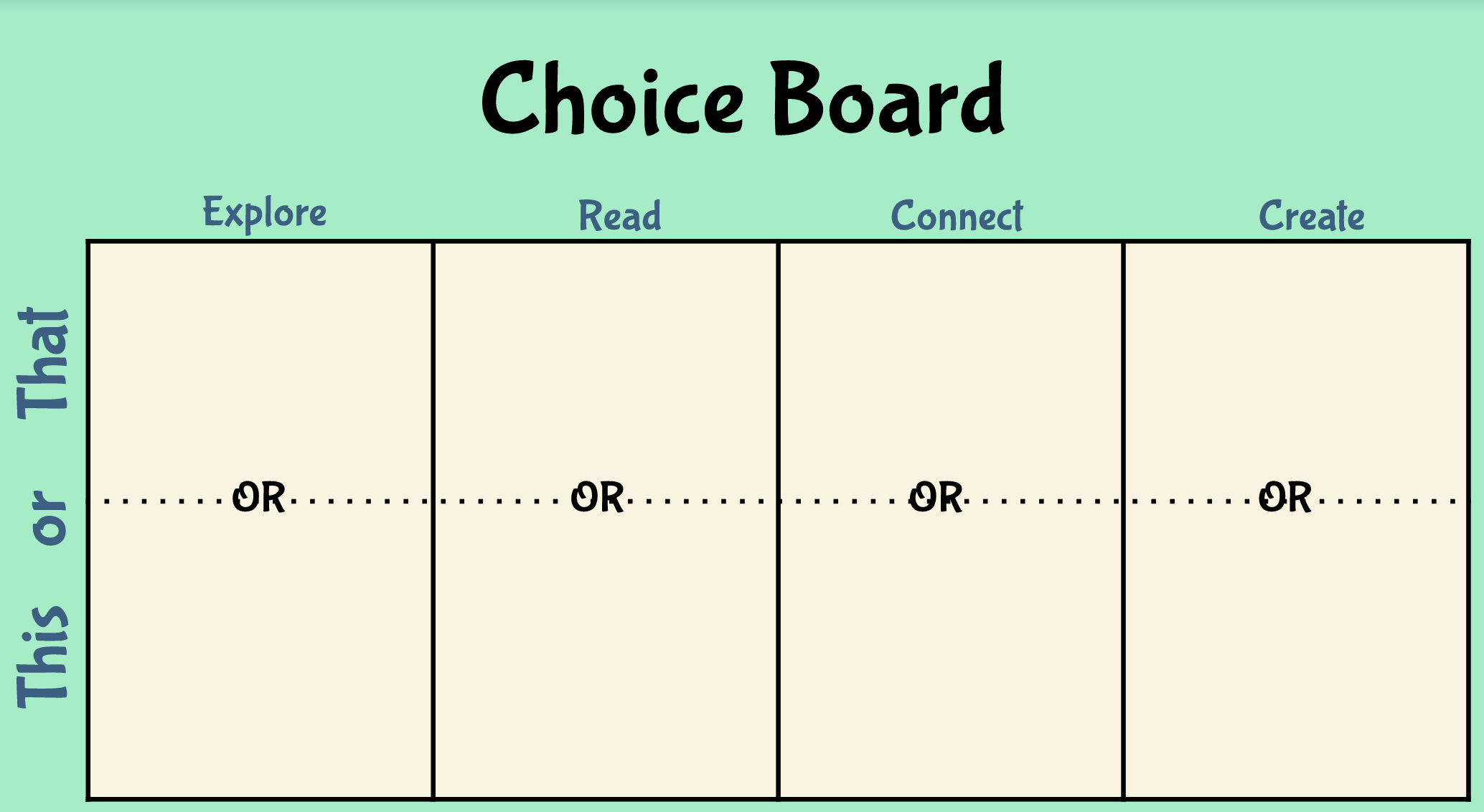
- Template 3: Stations rotation with three stations (teacher, traditional, online).
